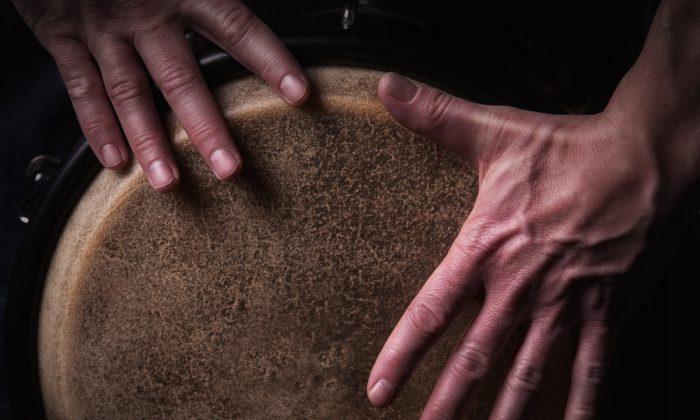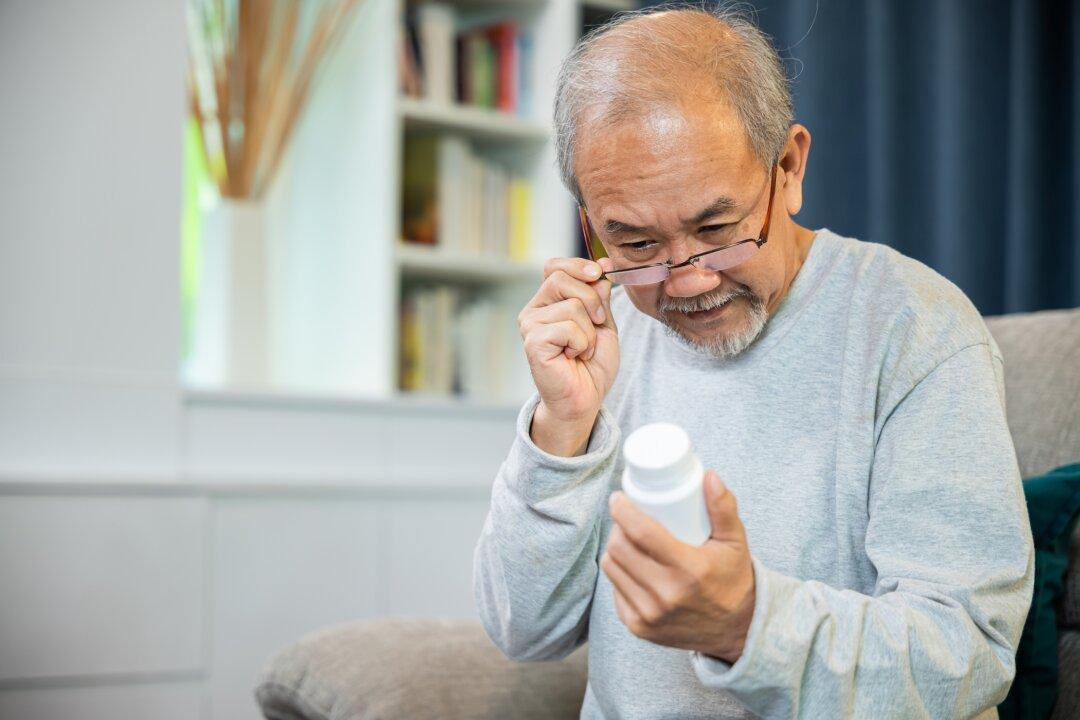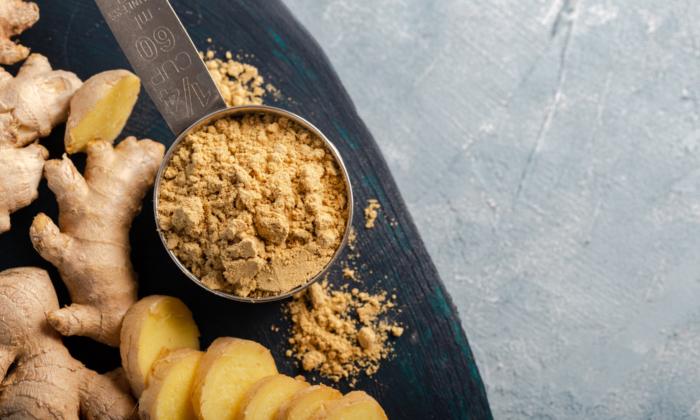Drumming is as fundamental a form of human expression as speaking, and likely emerged long before humans even developed the capability of using the lips, tongue and vocal organs as instruments of communication.
To understand the transformative power of drumming you really must experience it. Anyone who has participated in a drum circle, or who has borne witness to one with an open and curious mind, knows that the rhythmic entrainment of the senses and the anonymous though highly intimate sense of community generated that follows immersion in one, harkens back to a time long gone, where tribal consciousness preempted that of self-contained, ego-centric individuals, and where a direct and simultaneous experience of deep transcendence and immanence was not an extraordinarily rare occurrence as it is today.
This experience is so hard-wired into our biological, social and spiritual DNA that even preschool children as young as 2.5 years appear to be born with the ability to synchronize body movements to external acoustic beats when presented in a social context, revealing that drumming is an inborn capability and archetypal social activity.

Even Bugs Know How to Drum
But drumming is not a distinctively human technology. The use of percussion as a form of musicality, communication, and social organization, is believed to stretch as far back as 8 million years ago to the last common ancestor of gorillas, chimpanzees and humans living somewhere in the forests of Africa.
For instance, recent research on the drumming behavior of macaque monkeys indicates that the brain regions preferentially activated by drumming sounds or by vocalizations overlap in caudal auditory cortex and amygdala, which suggests “a common origin of primate vocal and nonvocal communication systems and support the notion of a gestural origin of speech and music.”
Interestingly, percussive sound-making (drumming) can be observed in certain species of birds, rodents and insects. Of course you know about the woodpecker’s characteristic pecking, but did you know that mice often drum with their feet in particular locations within their burrow, both for territorial displays and to sound alarms against predators? Did you know that termites use vibrational drumming signals to communicate within the hive? For instance, soldiers threatened with attack drum their heads against tunnels to transmit signals along subterranean galleries, warning workers and other soldiers to respond accordingly. See the video below for an example of termite drumming.

Percussion: Sound Waves Carry Epigenetic, Biologically Meaningful Information
Even more amazing is the fact that wasps appear to use antennal drumming to alter the caste development or phenotype of their larvae. Conventional thinking has held for quite some time that differential nutrition alone accounted for why one larvae develops into a non-reproductive worker and one into a reproductive female (gyne). This is not the case, according to a 2011 study:
This finding indicates that the acoustic signals produced through drumming within certain species carry biologically meaningful information (literally: ’to put form into') that operate epigenetically (i.e. working outside or above the genome to effect gene expression).
This raises the question: is there ancient, biologically and psychospiritually meaningful information contained within drum patterns passed down to us from our distant ancestors? Could some of these rhythms contain epigenetic information that affect both the structure (conformation) and function of biomolecules and biologically meaningful energetic/information patterns in our body? If so, this would mean these ancient patterns of sound could be considered “epigenetic inheritance systems” as relevant to DNA expression as methyl donors like folate and betaine and not unlike grandmother’s recipe (recipe literally means “medical prescription” in French) for chicken soup that still adds the perfect set of chemistries and information specific to your body to help you overcome the common cold or bring you back from fatigue.
We do have some compelling evidence from human clinical and observational studies on the power of drumming to affect positive change both physically and psychologically, seemingly indicating the answer to our question about the biological role of acoustic information in modulating micro and macro physiological processes in a meaningful way is YES.
Naples drum circle joins the African cultural festival performance in Fort Myers, 2008
6 Evidence-Based Health Benefits of Drumming
Drumming has been proven in human clinical research to do the following six things:
- Reduce Blood Pressure, Anxiety/Stress: A 2014 study published in the Journal of Cardiovascular Medicine enrolled both middle-aged experienced drummers and a younger novice group in a 40-minute djembe drumming sessions. Their blood pressure, blood lactate and stress and anxiety levels were taken before and after the sessions. Also, their heart rate was monitored at 5 second intervals throughout the sessions. As a result of the trial, all participants saw a drop in stress and anxiety. Systolic blood pressure dropped in the older population postdrumming.
- Increase Brain White Matter & Executive Cognitive Function: A 2014 study published in the Journal of Huntington’s Disease found that two months of drumming intervention in Huntington’s patients (considered an irreversible, lethal neurodegenerative disease) resulted in “improvements in executive function and changes in white matter microstructure, notably in the genu of the corpus callosum that connects prefrontal cortices of both hemispheres.” The study authors concluded that the pilot study provided novel preliminary evidence that drumming (or related targeted behavioral stimulation) may result in “cognitive enhancement and improvements in callosal white matter microstructure.”
- Reduced Pain: A 2012 study published in Evolutionary Psychology found that active performance of music (singing, dancing and drumming) triggered endorphin release (measured by post-activity increases in pain tolerance) whereas merely listening to music did not. The researchers hypothesized that this may contribute to community bonding in activities involving dance and music-making.
- Reduce Stress (Cortisol/DHEA ratio), Increase Immunity: A 2001 study published in Alternative Therapies and Health Medicine enrolled 111 age- and sex- matched subjects (55 men and 56 women; mean age 30.4 years) and found that drumming “increased dehydroepiandrosterone-to-cortisol ratios, increased natural killer cell activity, and increased lymphokine-activated killer cell activity without alteration in plasma interleukin 2 or interferon-gamma, or in the Beck Anxiety Inventory and the Beck Depression Inventory II.”
- Transcendent (Re-Creational) Experiences: A 2004 study published in the journal Multiple Sclerosis revealed that drumming enables participants to go into deeper hypnotic states, and another 2014 study poublished in PLoS found that when combined with shamanistic instruction, drumming enables participants to experience decreased heartrate and dreamlike experiences consistent with transcendental experiences.
- Socio-Emotional Disorders: A powerful 2001 study published in the journal Evidence-Based Complementary and Alternative Medicine found that low-income children who enrolled in a 12-week group drumming intervention saw multiple domains of social-emotional behavior improve significantly, from anxiety to attention, from oppositional to post-traumatic disorders.
Taking into account the beneficial evolutionary role that drumming likely performed in human history and prehistory, as well as the new scientific research confirming its psychosocial and physiological health benefits, we hope that it will be increasingly looked at as a positive medical, social and psychospiritual intervention. Considering the term recreation in its root etymological sense: re-creation, drumming may enable us to both tap into the root sense of our identity in the drumming-mediated experience of being joyous, connected and connecting, creative beings, as well as find a way to engage the process of becoming, transformation and re-creation that is also a hallmark feature of being alive and well in this amazing, ever-changing universe of ours.

New to Drumming and Want to Try It?
Fortunately, drum circles have sprouted up in thousands of locations around the country spontaneously, and almost all of them are free. You will find them attended by all ages, all walks of life and all experience levels. The best way to find one is google the name of your area and “drum circle” and see what comes up. Also, there is an online directory that lists drum circles around the country: http://www.drumcircles.net/circlelist.html
You can also find a drum online through sites like Djembe Drums & Skins. For the record, I have no affiliate relationship with Shorty Palmer or his site, but only know him as a humble master craftsman and the source for all the drums I own today.
This article was originally published on www.GreenMedInfo.com. Join their free GreenMedInfo.com newsletter
*Image of “drum“ via Shutterstock







